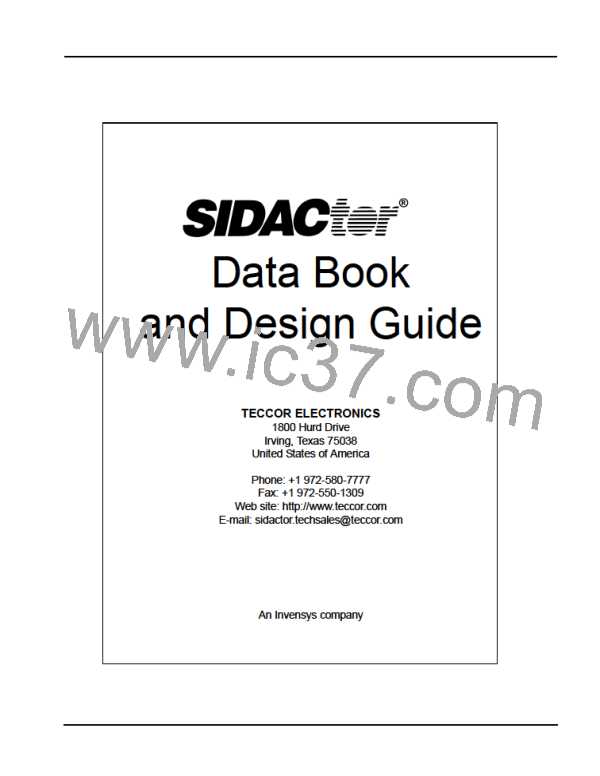SIDACtor Device Selection Criteria
SIDACtor Device Selection Criteria
When selecting a SIDACtor device, the following criteria should be used:
Off-state Voltage (VDRM
)
The V
of the SIDACtor device must be greater than the maximum operating voltage of
DRM
the circuit that the SIDACtor device is protecting.
Example 1:
For a POTS (Plain Old Telephone Service) application, convert the maximum operating
Ring voltage (150 V rms) to a peak voltage, and add the maximum DC bias of the central
office battery:
150 VRMS ꢁ2 + 56.6 VPK = 268.8 VPK
ꢃꢀVDRM > 268.8 V
Example 2:
For an ISDN application, add the maximum voltage of the DC power supply to the
maximum voltage of the transmission signal (for U.S. applications, the U-interface will not
have a DC voltage, but European ISDN applications may):
150 VPK + 3 VPK = 153 VPK
ꢃꢀVDRM > 153 V
Switching Voltage (VS)
The V of the SIDACtor device should be equal to or less than the instantaneous peak
S
voltage rating of the component it is protecting.
Example 1:
VS ? VRelay Breakdown
Example 2:
VS ? SLIC VPK
Peak Pulse Current (IPP)
For circuits that do not require additional series resistance, the surge current rating (IPP) of
the SIDACtor device should be greater than or equal to the surge currents associated with
the lightning immunity tests of the applicable regulatory requirement (IPK):
IPP O IPK
For circuits that use additional series resistance, the surge current rating (IPP) of the
SIDACtor device should be greater than or equal to the available surge currents associated
with the lightning immunity tests of the applicable regulatory requirement (IPK(available)):
IPP O IPK(available)
© 2002 Teccor Electronics
5 - 5
http://www.teccor.com
+1 972-580-7777
®
SIDACtor Data Book and Design Guide

 TECCOR [ TECCOR ELECTRONICS ]
TECCOR [ TECCOR ELECTRONICS ]